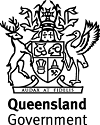Published Monday, 14 January, 2008 at 02:23 PM

Minister for Natural Resources and Water and Minister Assisting the Premier in North Queensland
The Honourable Craig Wallace
INNISFAIL RESIDENTS HAVE CHANCE TO MAKE THEIR MARK ON THE MAP
Minister for Natural Resources and Water, Craig Wallace, today encouraged Innisfail residents to become involved in the creation of their community’s history by suggesting new place names.
Minister Wallace is inviting residents to name a geographic feature or area of land by lodging an application with his department.
“The Department of Natural Resources and Water administers the Place Names Act 1994, which controls the official naming of localities, suburbs and geographical features within local government areas,” Mr Wallace said.
“Queensland has over 40,000 official place names and these are constantly being added to by the community,” Mr Wallace said.
“People have a chance to be part of history by creating a new Queensland place name,” he said.
“We do not accept place names that honour living people, we try to avoid duplicating names and commercial names but otherwise people are free to put their mark on the map.”
Some of Queensland’s more unusual names include Baking Board (Chinchilla Shire), Yorkeys Knob (Cairns), Macaroni (Carpentaria Shire), Hell Hole Gorge National Park (Quilpie Shire), Silver Spur (Inglewood Shire), Beer Creek (Esk Shire) and Ginger Beer Creek (Calliope Shire).
Close to 110 new and amended place names were added to the database over the past year.
According to the Department of Natural Resources and Water's (NRW) place names database, Innisfail was originally called Geraldton after the sugar plantation pioneered by Thomas Henry Fitzgerald, sugar grower and politician.
In 1910 this was officially changed to Innisfail to avoid confusion with Geraldton in Western Australia.
Minister Wallace, said the place names database reflected the diverse and fascinating background of many of the state’s suburbs and towns.
“There are some really interesting names throughout the Innisfail region,” he said.
Examples include:
- Flying Fish Point (changed from Musgrave). This suburb's name was taken from the name of the point itself, which was christened by George Elphinstone Dalrymple (1826-1876) explorer, public servant and politician. He named the point after a twelve ton cutter called Flying Fish, the principal vessel of the 1873 North East Coast Expedition.
- Johnstone is thought to have been named after explorer and police officer Robert Arthur Johnstone (1843-1905).
- Palmerston was presumably named after Christie Palmerston, explorer and prospector.
- The upper reach of Stewart Creek was renamed Mena Creek in 1954, after local resident Mena Fallon (nee Noone).
- Cowley Beach was named after Ebenezer Cowley, a horticulturalist and overseer at Kamerunga State Nursery. The township was originally named Inarlinga.
Mr Wallace said while many of the names on the database were European in origin, a large number reflected Aboriginal culture and language.
"Have you ever enjoyed watching the sun rise over Kurrimine Beach? Kurrimine comes from an Aboriginal word indicating sunrise or dawn.
“If you look up Daradgee on the website you will see it was derived from an Aboriginal word indicating burial ground, and Mundoo is reportedly the name of a local Aboriginal clan.”
Minister Wallace said the place names database reflected the diverse and fascinating background of many of the state’s suburbs and towns.
“While many of the names on the database are European in origin, a large number reflect Aboriginal culture and language,” Mr Wallace said.
Other interesting place names include:
Miallo – an Aboriginal word indicating wild country
Julatten – an Aboriginal word for small creek
Lake Eacham – Eacham is reportedly an Aboriginal word meaning big spring
Lake Barrine – Barrine is a corruption of “barrang”, an Aboriginal word indicating big water.
Malanda – an Aboriginal word indicating the stream known as the Upper Johnstone River, possibly with the connotation little stream with big stones.
Millaa Millaa – a corruption of “millai millai, possibly from the Yindinji language indicating a fruit bearing plant Eleagnus latifolia.
Mr Wallace said people could look up the name of their suburb or town by visiting: www.nrw.qld.gov.au/property/place_names.html
"The place names website is an evolving document and we are always on the lookout for new information about how a suburb, town or land feature got its name."
Media inquiries: Clare Gillic, Minister's Office, 3896 3688
